Just when it appeared that Friday's action in the equity market had the possibility of turning ugly there was a broad based rally that brought the indices back from the brink. The S&P 500 closed out the session with a modest retreat of just 0.3% although at one point during the session it was more than one percent lower. The daily chart of the Nasdaq Composite (^IXIC) below shows that intraday the index dropped below the 2400 level but noticeably remained just above the intraday low from last Tuesday.
The economic fundamentals continue to point to more of a slowing than may have yet been discounted, and Treasury yields are reaching back to the lowest levels of the year when short-term rates were below where they are today. Despite this, the market's resilience on Friday suggests that bearish index players could be facing an uphill struggle if they attempt to spook the long only fund managers into any kind of panic liquidation. The indices are becoming more vulnerable to increased downside risk and volatility and we would expect to remain cautious on the long side and opportunistic on the short side between now and the end of the year.
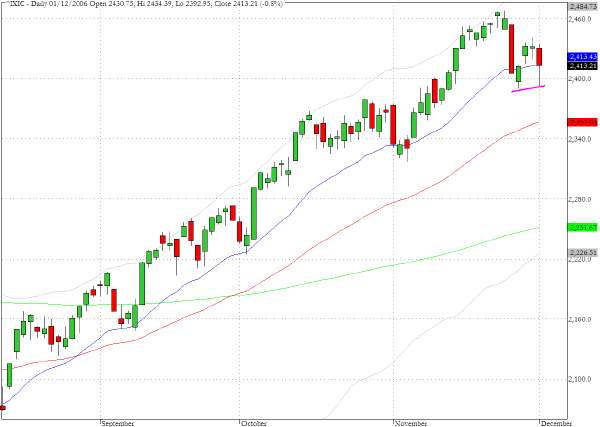
The Russell 2000 (^RUT) also experienced a strong reversal and after breaking below the 20-day EMA in early trading it reversed to close above it at 781 for a 0.6% decline on the day. In coming sessions we would suggest keeping this index prominently on the radar screen whenever there is a further bout of weakness.

One of the factors that is contributing to the unease that produced Friday√Ę‚,¨‚"Ęs early sell-off is the upward momentum in the energy sector. The oil index (^XOI) has now returned to the peak levels from earlier in the summer and part of the impetus behind the renewed strength for the oil stocks is the deterioration in the dollar which is the benchmark currency for crude.
The European economies are insulated from the recent rise because of the greater purchasing power of their currencies with respect to dollar denominated commodities. Looked at from the alternative point of view, the US economy will be that much more exposed to higher relative input costs as the dollar declines further.
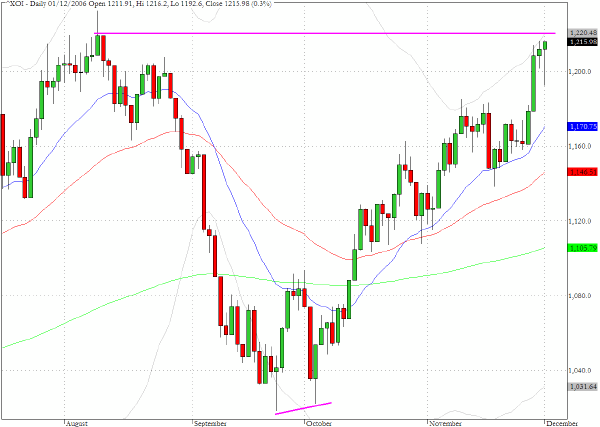
The broker/dealer sector (^XBD) has declined to an area of chart support which also coincides with the 50-day EMA. If the sector fails to find support near current levels this would be a further cause for concern for the bullish argument.

TRADE OPPORTUNITIES/SETUPS FOR MONDAY DECEMBER 4, 2006
The patterns identified below should be considered as indicative of eventual price direction in forthcoming trading sessions. None of these setups should be seen as specifically opportune for the current trading session.
Automatic Data Processing (ADP) closed below the 50-day EMA and there is clear evidence of distribution having taken place during November.
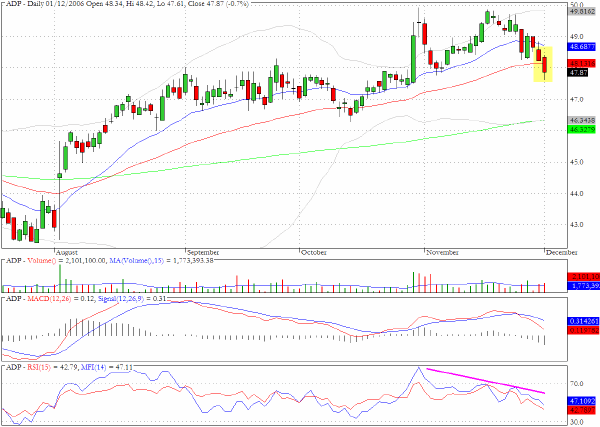
Amgen (AMGN) has also been suffering from a lack of buying interest and on Friday the stock fell below the 200-day EMA on heavy volume.
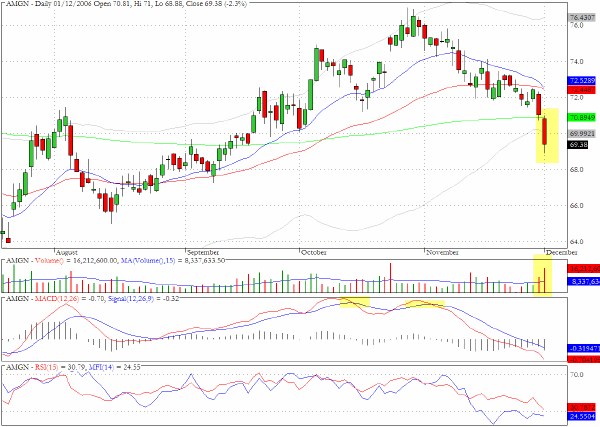
Brush Engineered Materials (BW) has recorded several shooting star candlesticks as it appears to be struggling to break above $36.
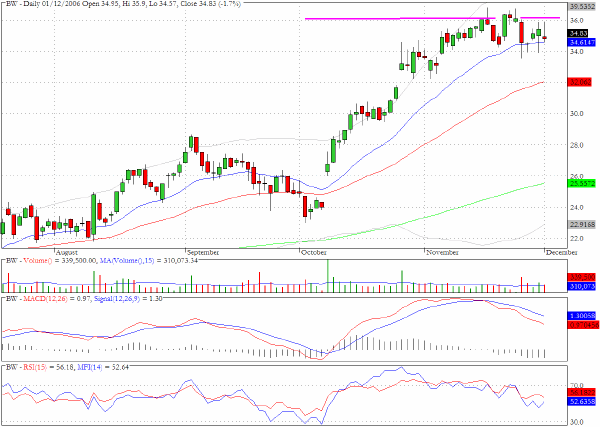
Express Scripts (ESRX) has a bullish looking triangle formation and the money flow characteristics are very positive.
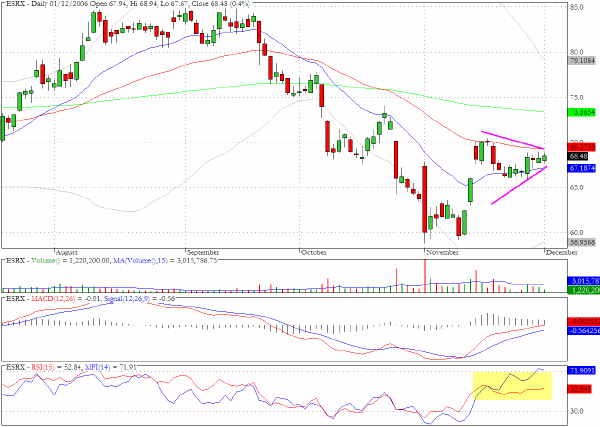
Clive Corcoran is the publisher of TradeWithForm.com, which provides daily analysis and commentary on the US stock market. He specializes in market neutral investing and and is currently working on a book about the benefits of trading with long/short strategies, which is scheduled for publication later this year.
Disclaimer
The purpose of this article is to offer you the chance to review the trading methodology, risk reduction strategies and portfolio construction techniques described at tradewithform.com. There is no guarantee that the trading strategies advocated will be profitable. Moreover, there is a risk that following these strategies will lead to loss of capital. Past results are no guarante of future results. Trading stocks and CFD's can yield large rewards, but also has large potential risks. Trading with leverage can be especially risky. You should be fully aware of the risks of trading in the capital markets. You are strongly advised not to trade with capital.